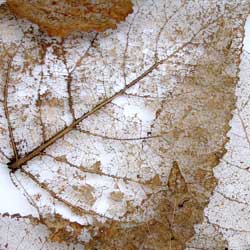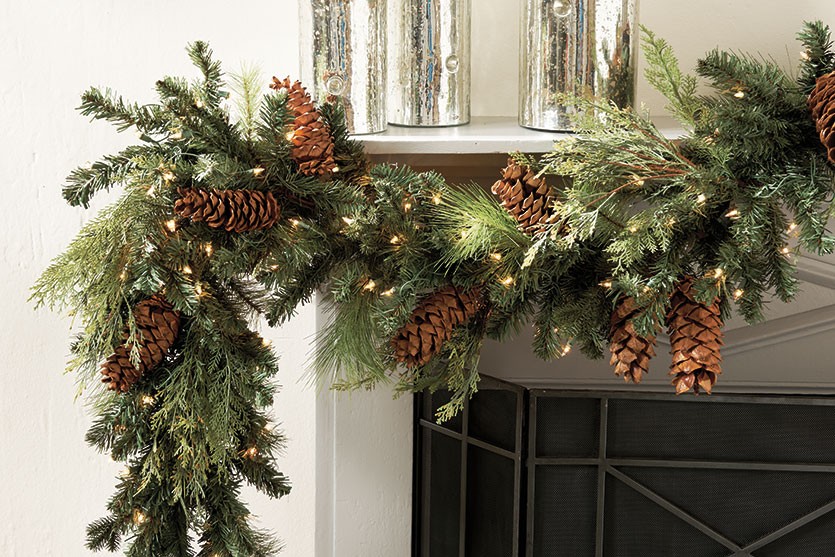How To Choose The Perfect Christmas Tree

1. Why purchase a live Christmas tree?
Live trees are the classic choice for the holidays. They offer a fresh and crisp profile and have that familiar scent and feel that remind people of the season.
- Live trees are all-natural. They are biodegradable.
- Unfortunately, live trees attract insects that can be a nuisance to your home.
- These trees also shed needles, which can be a hassle to clean up.
- Finally, these trees need to be maintained. To keep them fresh, their tree stand must be constantly filled with water.
2. What should I be on the lookout for when buying trees?
It’s important to consider the branches and needles before making a purchase. See if they are durable and can carry all your precious holiday ornaments. Also take a look at the profile of the tree. Make sure you purchase something that’s lush and with ample space for all your holiday adornments.
3. How tall should my Christmas tree be?
Height is an important factor to consider. After all, no one really wants a tree that’s too tall or too short. Before leaving your house or going online to shop, take a tape measure, and gauge the distance between your ceiling and your floor. The height of the tree should be at least a foot lower than your ceiling. If you plan on using a tree topper, factor in its height as well.
4. How wide should my Christmas tree be?
Measure the floor area of your chosen location as well. When allocating space for the width of your Christmas tree, there should be at least a foot of distance between the walls and your holiday tree.

5. What’s the perfect location for my Christmas tree?
Foyers and living rooms are always an ideal location for your Christmas tree. These are usually settings with a lot of foot traffic.
Go for rooms people use for gatherings and celebrations. Make sure that your tree is far from heat sources, such as air vents and fireplaces. This will significantly reduce the chances of accidents.
It’s also important to place your tree in a location where it won’t block the way. Corners or areas close to the wall are great choices. Put your tree in a place where there is a lot of space around it.
6. What accessories will my tree need?
First, your tree needs a stable and sturdy stand. Make sure to purchase a stand that resists rust and will prevent the tree from falling over with the slightest push or tug.
Ornaments are never a bad idea. These decorations bring an air of festivity to any space. Pick out a theme before going out and purchasing these fine holiday accents. Lastly, think about getting a tree topper to complete your Christmas scheme.

Tree toppers are a great way to make a statement about what Christmas means to you and your family. Choose a top ornament that complements your tree and holiday decorative theme. Don’t choose a heavy tree topper. This might cause the whole tree to topple over.
Insect Control Begins Now
It’s hard to think of insects in winter, but don’t forget the havoc these tiny creatures can bring to your garden – defoliating leaves, contaminating produce, even destroying complete plants. Before these pests begin to be a problem is the perfect time to take steps to control them.
Why Winter Control?
Late winter is the right time to control insects for two reasons. First, the insects and their eggs are just coming out of dormancy. The shells and protective coverings are softer and more porous in late winter, and so are more vulnerable to the effects of oils and sprays. Second, the oil-water mixture should not freeze on the tree or plants, which could damage the plant and make the spray far less effective. When you spray, the temperature should be above 40 degrees. Delay spraying if freezing night temperatures are predicted. Choose a calm day for spraying to be sure stray breezes and cross winds do not spread the spray to plants you don’t want covered.
Insects to Control
In late winter, before any leaf buds begin to open, spray Bonide All-Season Oil or Dormant Oil Spray on fruit trees or other ornamental trees or shrubs to suffocate over-wintering aphids, thrips, mealybugs, whitefly, pear psylla, scale and spider mites that cling to the bark. The treatment will also destroy the eggs of codling moths, Oriental fruit moths and assorted leaf rollers and cankerworms. Don’t wait until the buds have burst in early spring, as the coating of oil will also smother the emerging plant tissue.
Tree Spraying Tips
While small shrubs can be easy to treat, larger trees are more challenging to be sure you don’t leave any area untreated where insects can thrive. Spray the whole tree at one time, concentrating on the trunk, large branches and crotches, rather than spraying down a whole row of trees at one pass. If you’ve experienced extremely bad infestations of insects, you might treat your trees a second time. But be sure to spray before the buds are near the bursting point. Dormant oil can also be used after the leaves have dropped in the fall. Never spray when any foliage or fruit is on the trees or you risk unwanted pesticide contamination.
After you spray, be sure to store any remaining oil properly and out of reach of children and pets. Containers should be labeled clearly and kept in cool, dark spaces to preserve their usefulness. Avoid reusing any sprayers to minimize the risk of cross contamination or inadvertent use.
Spraying for insects in winter may not be the most glamorous job, but you’ll appreciate the improvement in your trees through the spring and summer when you’ve nipped your insect problems in the bud.
It’s hard to think of insects in winter, but don’t forget the havoc these tiny creatures can bring to your garden – defoliating leaves, contaminating produce, even destroying complete plants. Before these pests begin to be a problem is the perfect time to take steps to control them.
Why Winter Control?
Late winter is the right time to control insects for two reasons. First, the insects and their eggs are just coming out of dormancy. The shells and protective coverings are softer and more porous in late winter, and so are more vulnerable to the effects of oils and sprays. Second, the oil-water mixture should not freeze on the tree or plants, which could damage the plant and make the spray far less effective. When you spray, the temperature should be above 40 degrees. Delay spraying if freezing night temperatures are predicted. Choose a calm day for spraying to be sure stray breezes and cross winds do not spread the spray to plants you don’t want covered.
Insects to Control
In late winter, before any leaf buds begin to open, spray Bonide All-Season Oil or Dormant Oil Spray on fruit trees or other ornamental trees or shrubs to suffocate over-wintering aphids, thrips, mealybugs, whitefly, pear psylla, scale and spider mites that cling to the bark. The treatment will also destroy the eggs of codling moths, Oriental fruit moths and assorted leaf rollers and cankerworms. Don’t wait until the buds have burst in early spring, as the coating of oil will also smother the emerging plant tissue.
Tree Spraying Tips
While small shrubs can be easy to treat, larger trees are more challenging to be sure you don’t leave any area untreated where insects can thrive. Spray the whole tree at one time, concentrating on the trunk, large branches and crotches, rather than spraying down a whole row of trees at one pass. If you’ve experienced extremely bad infestations of insects, you might treat your trees a second time. But be sure to spray before the buds are near the bursting point. Dormant oil can also be used after the leaves have dropped in the fall. Never spray when any foliage or fruit is on the trees or you risk unwanted pesticide contamination.
After you spray, be sure to store any remaining oil properly and out of reach of children and pets. Containers should be labeled clearly and kept in cool, dark spaces to preserve their usefulness. Avoid reusing any sprayers to minimize the risk of cross contamination or inadvertent use.
Spraying for insects in winter may not be the most glamorous job, but you’ll appreciate the improvement in your trees through the spring and summer when you’ve nipped your insect problems in the bud.that cling to the bark. The treatment will also destroy the eggs of codling moths, Oriental fruit moths and assorted leaf rollers and cankerworms. Don’t wait until the buds have burst in early spring, as the coating of oil will also smother the emerging plant tissue.
Tree Spraying Tips
While small shrubs can be easy to treat, larger trees are more challenging to be sure you don’t leave any area untreated where insects can thrive. Spray the whole tree at one time, concentrating on the trunk, large branches and crotches, rather than spraying down a whole row of trees at one pass. If you’ve experienced extremely bad infestations of insects, you might treat your trees a second time. But be sure to spray before the buds are near the bursting point. Dormant oil can also be used after the leaves have dropped in the fall. Never spray when any foliage or fruit is on the trees or you risk unwanted pesticide contamination.
After you spray, be sure to store any remaining oil properly and out of reach of children and pets. Containers should be labeled clearly and kept in cool, dark spaces to preserve their usefulness. Avoid reusing any sprayers to minimize the risk of cross contamination or inadvertent use.
Spraying for insects in winter may not be the most glamorous job, but you’ll appreciate the improvement in your trees through the spring and summer when you’ve nipped your insect problems in the bud.
How to Measure For Christmas Wreaths and Garland
Christmas Wreaths
The size of wreath needed for your front entrance really depends on the look you want. For a bold and festive feel, go large! If you prefer a more reserved look, choose a smaller size.
For a standard 36 inch wide front door, add dramatic impact with a wreath 28 inches to 30 inches in diameter. On the other hand, a wreath 20 inches to 24 inches in diameter creates a classic, understated look.
For oversized doors, we recommend a 30 inch to 36 inch diameter wreath. This large size will carry the appropriate scale in relation to the front door.
Typically, the larger the wreath, the higher you should hang it on the door. Since large wreaths usually weigh more than small wreaths, be sure to use a sturdy metal hanger or a securely fastened nail rather than plastic hanging fixtures.
What to do with miniature wreaths? Use your imagination! Decorate door knobs, candleholders, bureau knobs, and other place you happen to notice needs a little sprucing up for the holidays.
If you don’t wish to put a nail in your door, there are alternatives – try an over the door hanger or the 3M Adhesive Hangers all of which are available at your local home improvement store or local craft store. It is a great way to hang a wreath without damaging the door.
Christmas Garland

Measuring an arched door for garland.
The trick is to make sure you have enough garland to accommodate the top arch. We have a simple solution for this.
- HEIGHT – Measure from the ground to the top of the door, then double the number to account for both sides. Example: 10-ft. H door x 2 = 20 feet
- WIDTH – Measure from the outside trim of the door across to the other side, then calculate one-and-a-half times the width to cover the arch. Example: 10-ft. W door x 1.5 = 15 feet
- TOTAL – Add the HEIGHT measurement and the WIDTH measurement for the total amount of garland needed. Example: 20 feet (HEIGHT) + 15 feet (WIDTH) = 35 feet of garland
Add one foot to your total if you’d like the garland to puddle at the bottom.
Measuring a standard door or double doors for garland.
Simple math is all that’s required to be sure you have enough garland for your front entrance. This solutions works for double doors as well. Just be sure to measure the width across both doors, including trim.
- HEIGHT – Measure from the ground to the top of the door, then double the number to account for both sides. Example: 10-ft. H door x 2 = 20 feet
- WIDTH – Measure from the outside trim of the door across to the other side. In our example, the door is 4 feet wide.
- TOTAL – Add the HEIGHT measurement and the WIDTH measurement for the total amount of garland needed. Example: 20 feet (HEIGHT) + 4 feet (WIDTH) = 24 feet of garland
Add one foot to your total if you’d like the garland to puddle at the bottom.
Measuring a staircase banister or mantel to swag garland.
To swag garland down a staircase banister or across the mantel, use the same strategy as above. Measure the LENGTH of the banister or the WIDTH of the mantel, then calculate one-and-a-half times that dimension. Example: 6-ft. W mantel x 1.5 = 9 feet of garland. Many of you want to know whether garland should drape over the sides of the mantel or not? Well, there are no hard-fast rules when it comes to hanging garland. It is up to you. Whatever you want to do – go for it! Hang garland the way you like it.
Measuring a staircase banister or mantle to swag garland.
To swag garland down a staircase banister or across the mantel, use the same strategy as above. Measure the LENGTH of the banister or the WIDTH of the mantel, then calculate one-and-a-half times that dimension. Example: 6-ft. W mantel x 1.5 = 9 feet of garland
Measuring a staircase banister to wrap garland.
Measure the LENGTH of the staircase and the HEIGHT of the newel post from the handrail to the floor. Simply add the 2 dimensions and double that number. Example: 10-ft. L staircase + 3-ft. H newel post = 13 feet x 2 = 26 feet of garland
If all of this seems too complicated, use a ball of string, wrapping it as you would the garland. When you have the look you want, pull the string off and measure it with a tape measure. It can be that simple!








